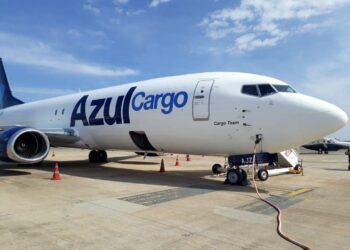Hawaiian Airlines continues to lower its annual jet fuel burn, despite unique obstacles to biofuel production and disproportionately high jet fuel consumption. The airline is the state’s largest and has served the four major islands longer than any other.
“Since the inception of the fuel efficiency campaign we have steadily implemented initiatives to reach almost 4% of the annual fuel budget,” said Arturo Parra, senior manager of fuel efficiency at Hawaiian Airlines, in an interview with Jet Fuel Innovation News. “In 2019, we achieved a reduction in jet fuel burn of 8.5 million gallons, compared to our 2015 baseline.”
According to reports from the Hawaii Tourism Authority, a record 9.9 million tourists traveled to the state in 2018, at a minimum 4,000 miles roundtrip. Because of high commercial and military demand, jet fuel accounts for one-third of all petroleum usage in Hawaii, the largest share of total petroleum consumption for jet fuel of any state except Alaska, according to the U.S. Energy Information Agency (EIA).
Joelle Simonpietri, who’s spent years researching the potential for biofuel developed with forest residuals on the islands, believes Hawaii could be among the first states to offer sustainable aviation fuel to airlines. However, Hawaiian is focused elsewhere, in terms of sustainability.
“Yes, biofuels are a critical element to achieve our industry’s sustainability goals,” Parra said. “However, when it comes to sourcing biofuels, we are challenged with limited land in Hawai‘i and, as a result, the emissions caused by transporting the fuel from its production point.”
In response to mounting pressure within the aviation industry to reduce emissions, Hawaiian Airlines has instead implemented initiatives to optimize efficiency at various stages of travel.
“In 2019, we became the first U.S. carrier to adopt this technology,” Parra said. “It augments flight plans done hours before departure by informing pilots throughout the flight about real-time aircraft data and meteorological information while recommending optimal altitudes to reduce fuel consumption.”
The airline’s pilots regularly use one engine when taxiing between the gate and runway, leverage adjustable aircraft flaps to reduce drag, resulting in lower fuel burn, and reduce their reliance on the brakes by shifting their planes in idle reverse thrust upon arrival. Additionally, they connect their aircraft to cleaner external power sources at the gate to reduce jet fuel consumption.
Before and during a flight, Hawaiian relies on state-of-the-art dispatching programs to optimize all phases of flying. Their A330 pilots flying their long-haul and busiest transpacific routes have access to the Pacelab Flight Profile Optimizer (FPO).
There are also plans to modernize its fleet, including with a multibillion-dollar investment in a new narrowbody A321 neo fleet, the most fuel-efficient aircraft of its type, which has a 16% lower fuel burn per trip compared with previous generation aircraft, and the more fuel-efficient widebody 787-9 Dreamliner.
Other sustainability efforts of the Honolulu-based airline include statistical analysis to plan the right amount of reserve fuel while meeting FAA requirements, participation in carbon-offset programs and investments to equip all jet-bridges in Honolulu (HNL), Kahului (OGG) and Lihu‘e (LIH) with electrical air conditioning, which will save an estimated 250,000 gallons of jet fuel.
Join us April 6-7 for Jet Fuel Innovation Summit, a new networking and learning opportunity that will dive into jet fuel processes, technologies, fuel sources and much more. To register and for more information about the event, visit www.jetfuelinnovation.com. Early registration ends Friday, Feb. 28!




